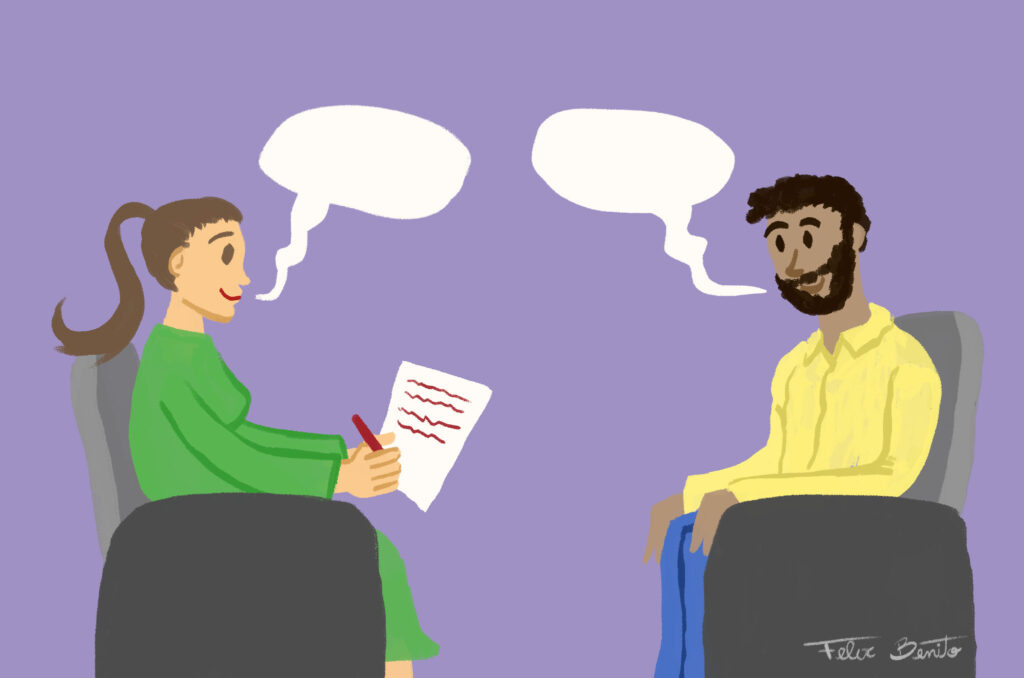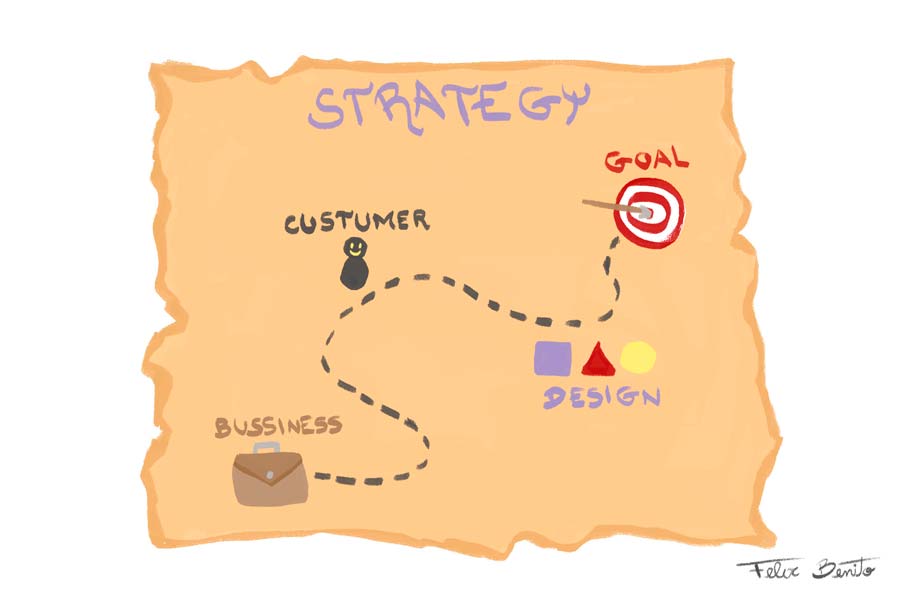Why does strategy matter?
Most of the time, the designers start a project directly from the creation part, not thinking much about the scope of it.
This kind of delivery could not achieve all the objectives and needs of the customers, that results in rework, wrong paths, waste of time and money.
If you do not work with strategy you just guess what you think or what the owner wants, but your supposes could be wrong.
Everything you design has to be a purpose and not just a guess.
The customers may also lose their patience and find the right answer in another place.
So, before starting to do the screens or another kind of visual work, it’s a good idea to think first about all possibilities of the work. Let ‘s see some tips!
Steps to work in a strategic way
- Asking questions (and try to answer them)
It is more common to do the strategy in the beginning of the project, but could be applied in all the process of the creation.

To start, it is a good idea to question the requester of the project that could be a project manager, a project owner, a marketing director or the owner of the business inself itens like:
- Why are we doing this?
- What things do you want to achieve with this?
- Who are we creating for?
- When do you need the project working?
- How does the project have to be delivered?
With the answers you can ask new questions to investigate more about the work that you have to do.
For example, if the person answers the first question with “we are doing this to get new customers”, you can ask more questions such as:
- How many customers do you have?
- Where do they live?
- Why do they buy from you?
- What things do they want to achieve?
- What problems do they want to solve?
Don’t forget to document the answers and to put them in a report that is easy to find and search for answers.
Depending on the answers, you can analyze them by yourself and schedule another meeting with more questions.
You need to understand the main goals of the business, the project and the audience.
The first interviews are very important to capture how big the project is and estimate the time, needs and problems that you are going to solve. If you are a freelancer you can also offer a more accurate price.
It is also a good idea to research on the internet about the lifestyle and habits for the users, see what the competitors do and collect what could be a nice thing to repeat and what it is not.
- Brainstorming
When you have these answers in mind, you can start to create some hipotesis for what you need to do and ensure that the vision of what you are thinking about is crafted with the user’s needs.
The brainstorming is the time to give flight to the imagination.
You can use a lot of tools to do the brainstorming sessions like crazy eights, the worst possible idea,
The importance is to come up with a good number of solutions.
Most of them are not gonna work, but do not worry. Be free at this moment.
After you discover some solutions, it is time to cut them out and try to prioritize the solutions which bring more value and are more adequate to the user’s needs.

- Researching to validate the hypothesis
After asking and answering questions and coming up with some ideas, you need to validate these results with possible customers.
The money and time of your client is very important, so you need to be sure to do the right thing, or the most close to.
Before starting researching and interviewing, you can create a proto persona with the information that you collected with the client.
The proto persona is a person that could be a possible customer.
You can set the habits, characteristics and how the product could interact with them.
With the proto persona is time to create a questionnaire to find some possible real personas to validate what you have done until now.
There are a lot of tools to create a digital questionnaire, but if it’s possible to do it in real life the result is much better.
Try to ask open questions to collect a rich amount of information, it is a good idea to mix some questions about the lifestyle and some possible uses of the product.
- Reviewing the strategy and put the magic powder
Now that you have the path to start to build the product that you’re designing, it is time to review what you have done until now and put the magic powder, that is something to bring the differentiation of your product.
Try to think What a Hell do people need to care about my product?
Why will people use my product if there are other options in the market?
Why is my product important?
What kind of problem does my product solve better than the competition?
Try to bring a magic thing to your product, what can you put at it that can make your product shine?

- Start to build it
When you have a solid strategy and a very well defined scope, the time to build the product is much easier and fast.
Now you can start to create the flows, information architecture, wireframes, sketches in the paper and in a digital app.
The strategy continues with the first MVPs of your product, because you need to validate it with the users, create the business definitions and the first trials that you have to achieve to launch the product in the market.
There are a lot of things that can make your work more valuable working with the strategy, like marketing deliverables, social media plans and branding definitions.
Think of always bringing some different things to your client to improve the product and your payment too.
A final thought said from Chris Do (The Futur):
The designers try to solve design problems. The strategists try to solve business problems through design.
It is not easy to create a new product that is successful, but working strategically is the best way to achieve it.
Thank you for the reading, see you next time.
If you want to see my work, click here.
References
Lean UX – Designing Great Products with Agile Teams
By Jeff Gothelf, Josh Seiden
https://www.amazon.com.br/Lean-UX-Applying-Principles-Experience/dp/1449311652
Jobs to be done
By Anthony W. Ulwick
How Strategy SAVED My Design Business – The Futur
https://www.youtube.com/watch?v=Xb5wldT512U
How to Translate Strategy to Design – The Futur
https://www.youtube.com/watch?v=TpcaCW85eI0
The UX Leader’s Secret Guide to Innovative, User-Driven Product Roadmaps – Jared Spool

